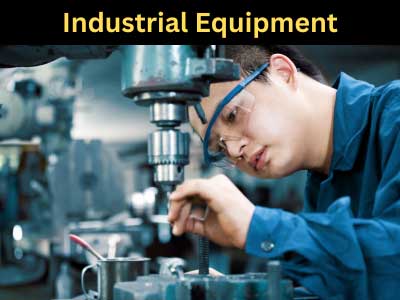Key Takeaway
Leasing equipment offers significant financial flexibility. Instead of a large upfront payment, you spread the cost over time. This keeps your cash flow steady and allows you to use the funds for other business needs. Leasing also gives you access to the latest technology without the burden of ownership, ensuring that your business stays competitive.
Additionally, many lease agreements include maintenance and service, reducing unexpected expenses. You can also benefit from tax advantages, as lease payments may be deductible as business expenses. Overall, leasing helps preserve capital, allowing you to invest in growth opportunities while maintaining access to essential equipment.
Cost Efficiency and Flexibility
Leasing equipment provides businesses with a cost-efficient and flexible alternative to outright purchasing. When a company leases equipment, it avoids the upfront cost of purchasing, which can be prohibitively expensive, especially for smaller businesses or startups. This allows companies to conserve cash for other critical operations like marketing, hiring, or expanding. Leasing also offers flexibility. As industries evolve, so does the need for newer, more advanced equipment. With leasing, businesses can upgrade to better machinery without being tied down by the burden of ownership. Instead of being stuck with outdated technology, leasing ensures companies can adapt to market changes and technology advancements, keeping their operations efficient.
Moreover, leasing allows businesses to scale quickly. If a business expands and requires additional equipment, leasing offers a faster way to secure the necessary machinery without waiting for capital to accumulate. This speed and agility give companies a competitive advantage, enabling them to grow without delay. Overall, leasing promotes operational flexibility while providing cost efficiency.

Improved Cash Flow for Businesses
One of the significant advantages of leasing equipment is its positive impact on cash flow. Instead of a large upfront payment required when purchasing equipment, leasing breaks the cost into manageable monthly payments. This helps businesses maintain liquidity and ensures there’s enough working capital for day-to-day operations. Managing cash flow is crucial, particularly for companies in their growth stages, as it allows them to respond to market opportunities and unexpected challenges with greater financial stability.
Additionally, leasing provides predictability in budgeting. Since lease payments are fixed, businesses can forecast expenses more accurately, enabling better financial planning. This predictability also helps avoid sudden financial shocks, such as unexpected maintenance costs, that come with owning equipment. By maintaining a steady cash flow, businesses can reinvest in growth, whether it’s through new hires, marketing campaigns, or research and development.
Access to the Latest Technology
Leasing equipment offers businesses the opportunity to access the latest technology without the burden of owning it. In industries where technological advancements happen frequently, owning equipment can quickly lead to obsolescence. Equipment that was state-of-the-art a few years ago may no longer meet the industry standards today. Leasing ensures businesses can keep up with these changes by upgrading their equipment periodically.
For example, in sectors such as manufacturing, healthcare, and information technology, new technologies often result in increased efficiency, higher production rates, and better service delivery. Leasing allows businesses to stay competitive by using the most modern, high-performance equipment without the hefty price tag associated with frequent replacements. This access to up-to-date technology also ensures businesses remain compliant with evolving regulations and industry standards, preventing disruptions in operations.
Avoiding Depreciation of Owned Equipment
Depreciation is a critical concern for businesses that invest heavily in equipment. The moment equipment is purchased, its value begins to depreciate, which can have significant financial implications over time. Leasing allows businesses to avoid this depreciation risk altogether. Since the equipment is not owned, the lessor bears the burden of the asset’s decreasing value. This is particularly advantageous in industries where equipment loses value rapidly due to wear and tear or technological advancements.
By leasing, businesses can enjoy the use of equipment without worrying about the financial hit associated with resale or disposal at the end of the equipment’s life cycle. Once the lease term is up, businesses can simply return the equipment or lease newer models, leaving depreciation concerns to the lessor. This aspect of leasing provides peace of mind, allowing companies to focus on productivity and growth instead of asset management.
Tax Benefits of Leasing
Leasing can also offer significant tax benefits for businesses. In many cases, lease payments are considered an operational expense and can be deducted from taxable income. This deduction lowers the business’s overall tax liability, making leasing an even more attractive option. Additionally, because lease payments are spread out over time, businesses can avoid large capital expenditures that could negatively impact their tax situation in the short term.
In certain leasing arrangements, businesses may also benefit from accelerated depreciation passed on by the lessor. This allows companies to take advantage of tax breaks without having to own the equipment. However, it’s essential for businesses to work closely with their financial advisors or tax consultants to understand the specific tax advantages of leasing based on their industry, location, and financial structure.
Conclusion
In today’s dynamic business landscape, leasing equipment has emerged as a strategic and flexible solution that helps companies navigate financial and operational challenges. One of the key advantages of leasing is cost efficiency, allowing businesses to avoid large upfront investments and spread payments over time. This significantly improves cash flow, enabling companies to allocate resources toward growth opportunities, innovation, or marketing efforts. Leasing also provides access to the latest technology, ensuring that businesses stay competitive without being burdened by outdated equipment.
Furthermore, leasing eliminates the financial impact of depreciation, as the responsibility for asset value reduction remains with the lessor. Additionally, businesses can leverage tax benefits, as lease payments are often tax-deductible. Ultimately, leasing allows companies to maintain operational agility, focusing on growth and development while minimizing financial risks.
